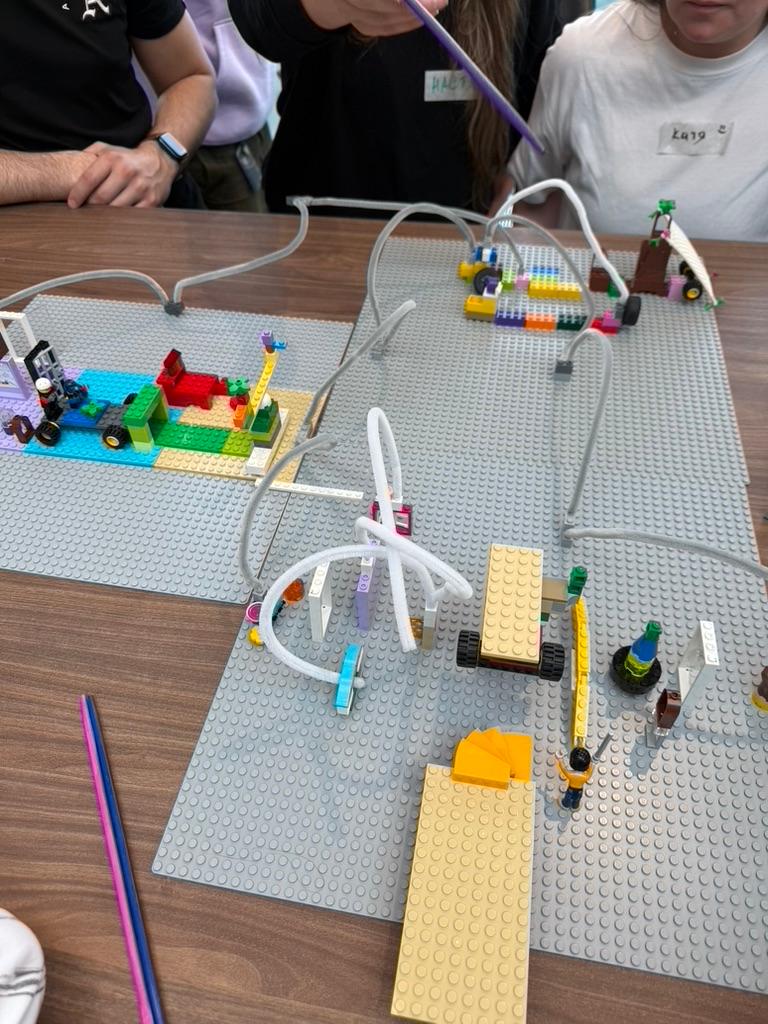🧱 Lego Serious Play
Thinking through your hands — building solutions in 3D
Lego Serious Play (LSP) is a facilitated meeting and problem-solving technique using LEGO bricks as a medium for building, storytelling, and exploration. It taps into the connection between hands and brain to unlock deeper thinking and shared understanding.
What Makes LSP Different?
Most meetings rely on words. But words can be vague, political, or simply insufficient for complex ideas.
LSP reverses the typical meeting dynamic:
- Instead of speaking first, you build first
- Instead of abstract discussion, you create tangible models
- Instead of dominant voices taking over, everyone's hands contribute equally
🧠 The Science Behind It
When you build with your hands, you activate different parts of your brain than when you speak. This leads to:
- Deeper reflection: Building slows you down and makes you think
- Metaphorical thinking: Abstract concepts become concrete
- Emotional engagement: Personal stories emerge through physical models
- Safe exploration: It's easier to critique a model than a person
Why LSP Works
🤝 Everyone Participates
In traditional meetings, the loudest voices dominate. With LSP, everyone builds their own model. There's no escaping participation — and no one can hide behind jargon or silence.
🎨 Metaphorical Thinking
LEGO bricks become symbols. A tower might represent hierarchy. A bridge might represent connection. Colors, positions, and structures reveal insights that words can't capture.
Example: In a session about team dynamics, one participant built a figure standing on a platform high above the others. When asked what it meant, they said: "That's me — I feel like I'm supposed to have all the answers, but I'm disconnected from the team."
💬 Shared Understanding
Models create a common language. Instead of debating abstract concepts, teams point to physical representations: "Do you see this connection? What if we strengthened it?"
🛡️ Safe Exploration
Building with LEGO feels playful and low-stakes. This psychological safety allows people to share difficult truths, explore risky ideas, and challenge the status quo without defensiveness.
Session Structure
Phase 1: Skills Building
Participants start with simple challenges to get comfortable with the medium:
- "Build a tower as tall as possible"
- "Build something that represents your morning"
This phase reduces self-consciousness and activates creative thinking.
Phase 2: Individual Models
Each participant builds a model in response to a challenge. Examples:
- "Build a model of your ideal work environment"
- "Build the biggest obstacle facing our team"
- "Build what success looks like in 3 years"
Then everyone shares the story of their model. No interruptions — just listening.
Phase 3: Shared Models
Teams combine their individual models or build together to represent a collective reality. This is where alignment happens — or where hidden disagreements surface.
Phase 4: Scenarios & Testing
Introduce changes or challenges to the shared model:
- "What happens if we lose our biggest client?"
- "What if a new competitor enters the market?"
Teams use their hands to explore different futures and build resilience into their strategies.
Session Applications
- Strategy Development: Visualize and align on organizational direction
- Team Building: Reveal team dynamics and strengthen connections
- Vision Creation: Build a shared picture of the future
- Product Design: Prototype ideas and user experiences
- Conflict Resolution: Surface tensions safely and find common ground
- Change Management: Explore impacts and build change scenarios
🎯 What You'll Gain
- Deeper insights than traditional discussion allows
- 100% participation from every team member
- Visual models that can be referenced long after the session
- Breakthrough moments that come from hands, not just heads
- Stronger team connections and psychological safety
